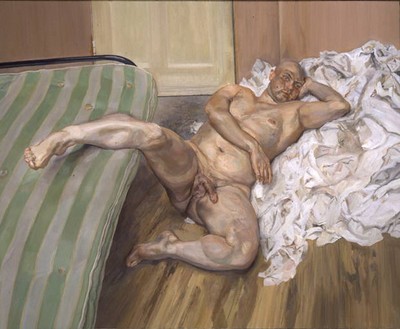For this report we were to look into two male artist and focus on what their interpretation of beauty in the male or female body is. We are to write about how their different views of beauty make their work different from other artists.
What's todays definition of beauty?
Ive decided to find out what todays definition of beauty is and what effect it has on us. Confucius who is a Philosopher and teacher described beauty like this "everyone has beauty but not everyone sees it". I find this quote quite enlightening as I do believe this myself. We spend everyday looking at the same face in the mirror and whenever a flaw appears we obsess over it, and find ways to correct it in order to achieve the perfect "beautiful" look. But these flaws are what make us beautiful.
I believe the media plays a huge part in convincing us what is beautiful and what's not. But the thing is, the majority of these "beautiful" people have their looks altered and they go through uncomfortable changes in order to look perfect.
My opinion of what's beautiful is something that has an emotional effect towards me not something that's perfect in every way or symmetrical...perfect is overrated.
Lucian Freud
Lucian Freud's has a recognizable style in the way that he captures the human figure. Not only in the way he paints but in the way he positions the subject, which can sometimes look uncomfortable for the sitter in my opinion. He is a British artist who is known for his individual style and used the impasto technique.
Other examples of the Impasto technique
Freud did many Nude paintings which usually involved friends, neighbours, models and family members. He would typically position the sitters casually across furniture in the nude and showed a keen interest in all aspects of the nude body.
 |
Man with leg up
Lucian Freud
|
In class we looked at quite a few paintings and some sculptures including Michelangelo's David sculpture. The one by Freud which was the "man with leg up" seemed to spark the most interest from the class and got the class talking. being the only guy in the class full of girls. it was interesting to sit back and hear what impact it had on them, seeing a male body so spread out and exposed. What I got from this painting was a feeling of vulnerability. it made me think of me being in that position and how uncomfortable id feel. But the expression of the sitter gave me the feeling that he doesn't care. and I think that was what Freud was going for. I get the feeling that he wanted to say "this is the human body and nothing needs to be hidden" this thought was going through my head at the time of seeing this. I did notice that there is no pubic hair on the man sitting, which does take away a little bit of the natural element.
 |
| Egon Schiele Self Portrait -1910 This is quite a frightening image of Schiele in a very revealing pose |
Egon had a very unusual way of portraying the human body, his paintings would usually look distorted and had a very graphical style. The paintings were expressive in nature and exaggerated a lot of the different aspects of the human form. Some of the paintings he produced were very sexual in nature in their direction. He believed by figurally distorting the human body he would challenge the idea of what is beauty, I think he would've caused the viewers to react to this idea when looking at his work. Egon portrait's were usually from the view above the sitter and were quite unsettling to view.
This style of work doesn't really appeal to me. I can admire it but it doesn't do anything for me. Maybe its because my style is so different and looking at this kind of thing doesn't make sense to me. Reading into it I can see why he chose to do this style, it would create a question like "what is considered beautiful?". I think these kind of artist exist so that we are forced to ask these kinds of questions, which is probably the reason they are so well known. Its kind of like the saying "the squeaky wheel gets the oil" Egon's style stands out because it is different from most other artists.
This style of work doesn't really appeal to me. I can admire it but it doesn't do anything for me. Maybe its because my style is so different and looking at this kind of thing doesn't make sense to me. Reading into it I can see why he chose to do this style, it would create a question like "what is considered beautiful?". I think these kind of artist exist so that we are forced to ask these kinds of questions, which is probably the reason they are so well known. Its kind of like the saying "the squeaky wheel gets the oil" Egon's style stands out because it is different from most other artists.
Even erotic art has a certain sanctity."-Egon Schiele
Sources-
https://www.tate.org.uk/art/artists/lucian-freud-1120
https://www.wikiart.org/en/lucian-freud/man-with-leg-up
https://www.theartstory.org/artist-schiele-egon.htm
Sources-
https://www.tate.org.uk/art/artists/lucian-freud-1120
https://www.wikiart.org/en/lucian-freud/man-with-leg-up
https://www.theartstory.org/artist-schiele-egon.htm

Comments
Post a Comment